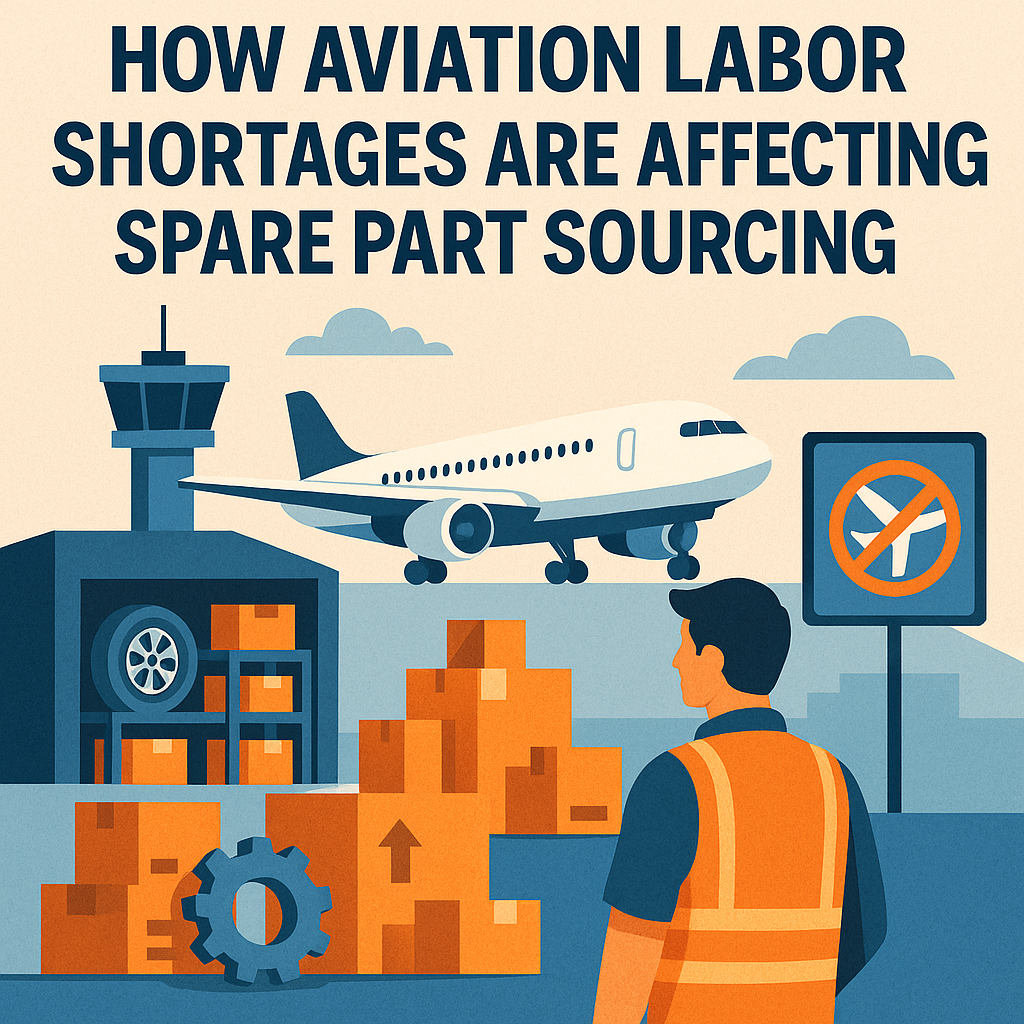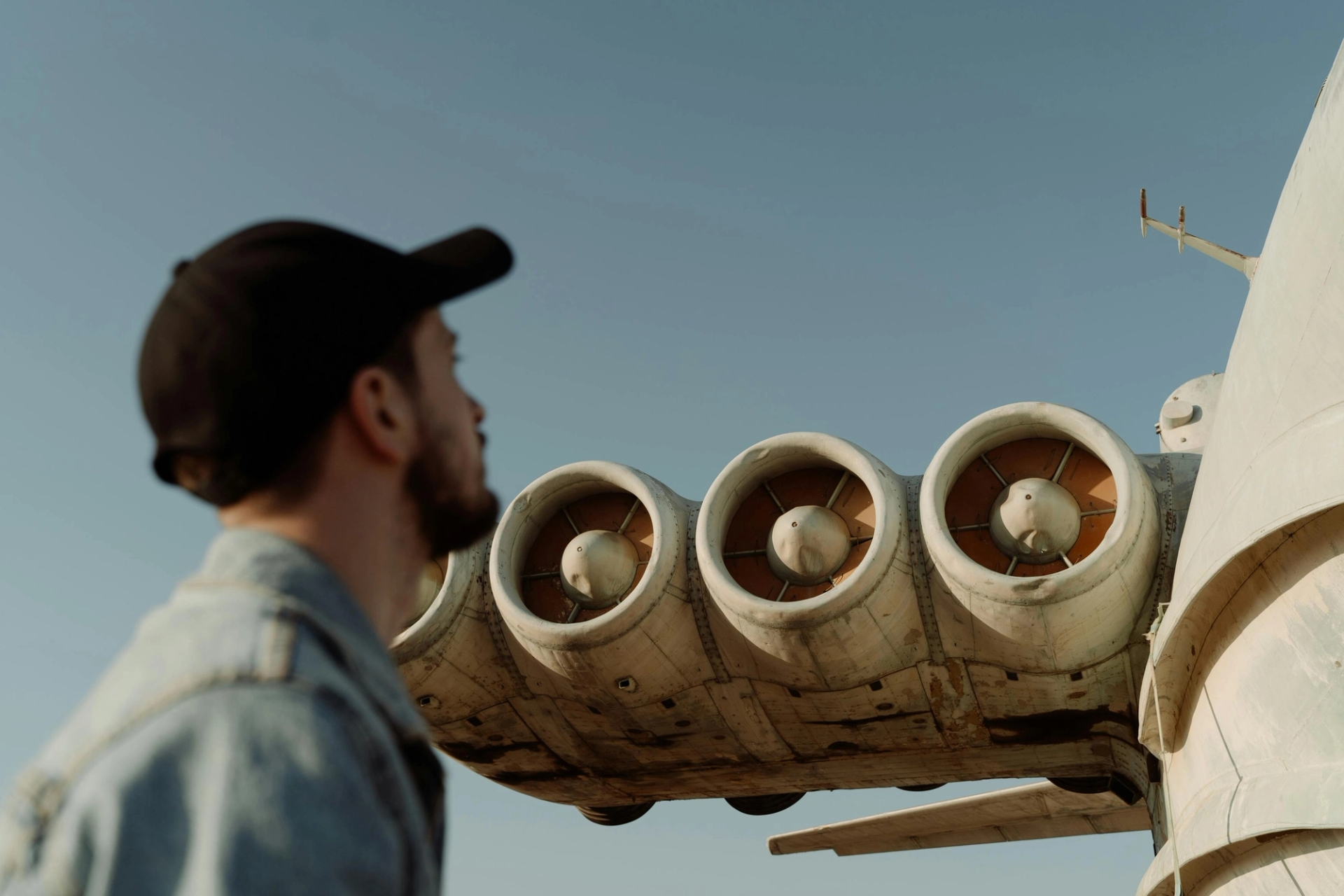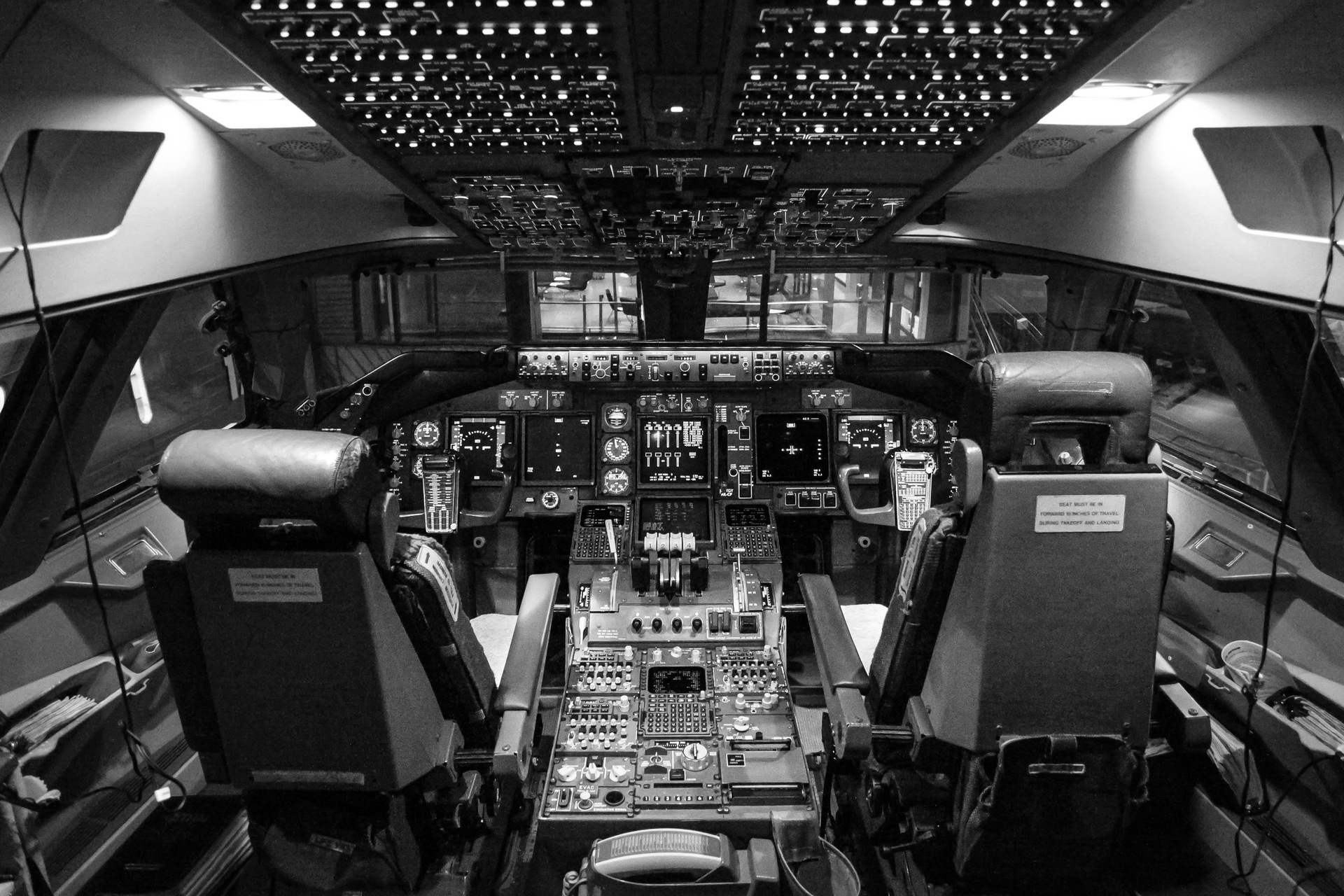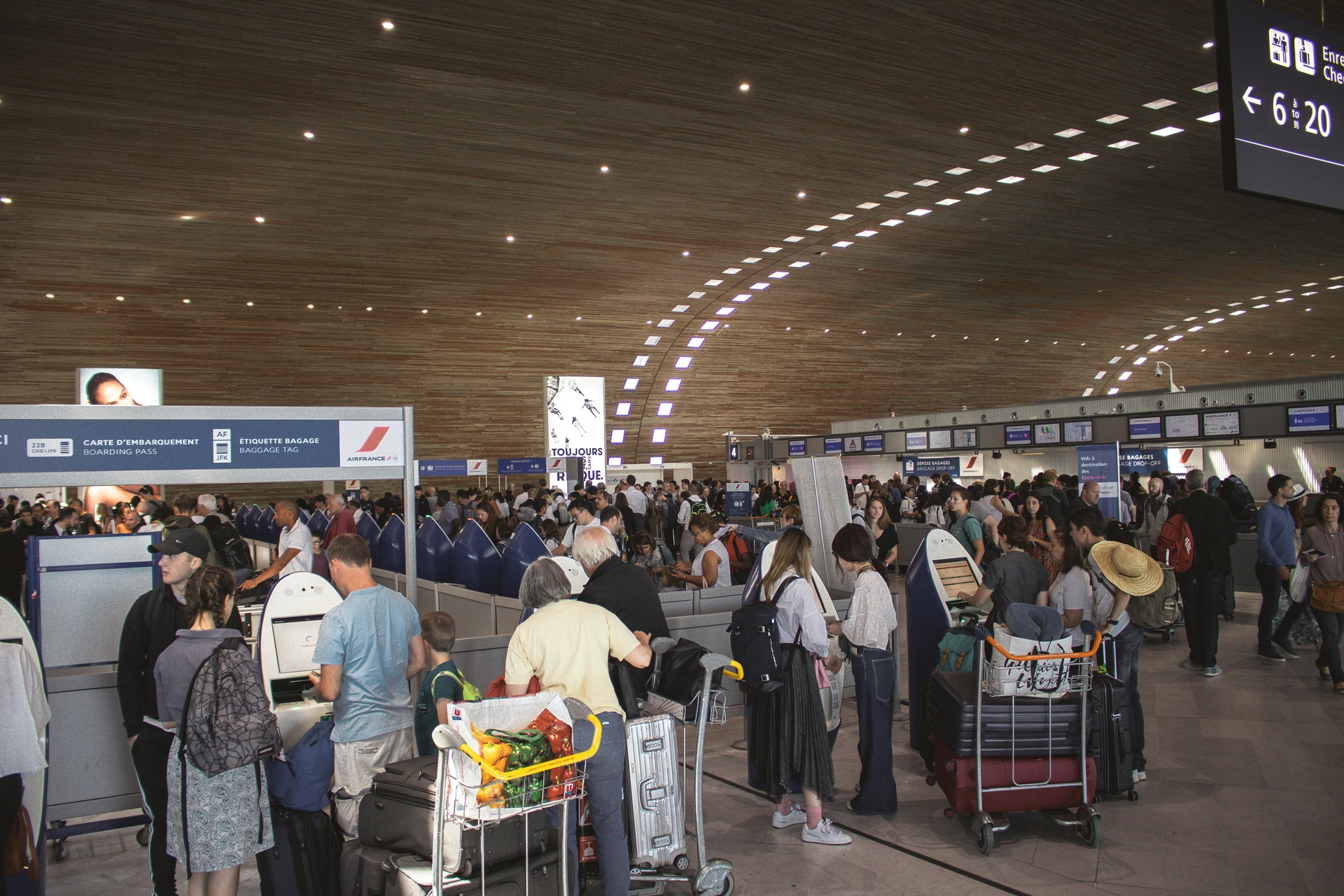
AeroGenie — Uw intelligente copiloot.
Hoe het tekort aan arbeidskrachten in de luchtvaart de inkoop van reserveonderdelen beïnvloedt
juli 10, 2025
Het tekort aan arbeidskrachten in de luchtvaartsector vertraagt niet alleen reparaties, maar ondermijnt ook de wereldwijde inkoop van onderdelen. Ontdek hoe MRO's en OEM's hun training, gereedschap en leveranciersstrategie heroverwegen.
Waarom het vinden van reserveonderdelen mislukt
Vliegtuigen vliegen niet zonder onderdelen, en onderdelen bewegen niet zonder mensen. Dat is het kernprobleem van de luchtvaart.onderhouds- en reparatiewerkzaamheden (MRO's)in 2025. Een ernstig tekort aan arbeidskrachten botst met de instabiliteit van de wereldwijde toeleveringsketen, waardoor een vertraging in de onderdelenproductie ontstaat die gevolgen heeft voor alles, van motorrevisies tot vervangingen van avionica.
Vóór de pandemie beschouwden veel luchtvaartleiders vertragingen in de inkoop als logistieke problemen. Nu is het probleem structureel. MRO-leveranciers, OEM's en luchtvaartmaatschappijen doen hun uiterste best om niet alleen schaarse componenten te bemachtigen, maar ook de bekwame technici die nodig zijn om ze te inspecteren, installeren en certificeren.Als deze vacatures niet worden ingevuld, raken de processen in de toeleveringsketen vast, komen vliegtuigen aan de grond te staan en worden de marges kleiner.
Hoe geavanceerd uw prognosesoftware ook is of hoe groot uw voorraad ook is, er zijn nog steeds mensen nodig om de voorraad reserveonderdelen op peil te houden. En op dit moment zijn er gewoon niet genoeg.
De personeelscrisis die de toeleveringsketen blokkeert
Het tekort aan personeel in de luchtvaartsector is niet plotseling ontstaan. Dit tekort is al decennialang aan de gang. De pensionering van babyboomers, de matige werving en de trage certificeringsprocedures hebben geleid tot een regelrechte personeelscrisis. Volgens de Aviation Technician Education Council (ATEC) is de gemiddelde leeftijd van onderhoudstechnici in de luchtvaart 54 jaar en heeft bijna 30% binnen vijf jaar een pensioendatum.Pijplijnrapport van de Aviation Technician Education CouncilT).
Boeing's Pilot and Technician Outlook 2023 voorspelt dat er wereldwijd 690.000 nieuwe onderhoudstechnici nodig zullen zijn tegen 2042 – een duizelingwekkend aantal dat zowel een groeiende vloot als een krimpende talentenpool weerspiegelt (Boeing-piloot en -technicus vooruitzichten).
Minder gecertificeerde werknemers op de werkvloer betekent langere wachttijden voor inspecties, diagnoses en reparaties van componenten. Alleen al in Noord-Amerika zou in 2023 een tekort van 12.000 tot 18.000 vliegtuigonderhoudstechnici kunnen ontstaan. Dit zal naar verwachting leiden tot vertragingen, annuleringen en de noodzaak om proactief meer reserveonderdelen en vliegtuigen op voorraad te houden.Avionics International,Luchtvervoer Actiegroep).
Erger nog, de kenniskloof tussen ervaren technici en nieuwe medewerkers vergroot de productiviteitskloof. Het opleiden van een nieuwe technicus is niet zo simpel als ze een moersleutel geven. FAA-regelgeving, OEM-specificaties en veiligheidsprotocollen van luchtvaartmaatschappijen vereisen intensieve bijscholing. Dat betekent dat elke openstaande vacature de wervingssnelheid verder vertraagt.
Als technici verdwijnen, verdwijnen ook de onderdelen
Tekorten aan arbeidskrachten verstoren de reparatietijdlijnen en verstoren de heleinkoopproces van reserveonderdelen.In theorie zou een magazijn vol wissel- en verbruiksartikelen vertragingen moeten opvangen. In werkelijkheid zijn die voorraden alleen nuttig als er personeel beschikbaar is om:
- Inkomende inspecties uitvoeren
- Voorraadsystemen beheren
- Coördineren met OEM's
- Componenten installeren en certificeren
En dat is precies waar het gat zit. Een tekort aan AMT's (Aviation Maintenance Technicians) betekent dat onderdelen ongebruikt blijven, zelfs als ze beschikbaar zijn. In sommige gevallen worden AOG-scenario's (Aircraft on Ground) met dagen of weken verlengd, niet omdat het onderdeel ontbreekt, maar omdat niemand toestemming heeft om het te installeren.
Een artikel uit juni 2025 inVliegend tijdschriftbenadrukt hoe dit probleem ertoe heeft geleid dat scholen als het Aviation Institute of Maintenance zijn gaan samenwerken met luchtvaartmaatschappijen om de aanvoer van technici te versnellen en vertragingen in de sourcing op te lossen (Vliegend tijdschriftMaar onderwijsvernieuwing kost tijd en de marktvraag wacht niet.
Van vertraagde leveringen tot verloren bestellingen: het domino-effect
Zelfs voordat een onderdeel de hangar bereikt, maken personeelstekorten stroomopwaarts de sourcing kwetsbaarder. Denk eens aan hoe deze personeelstekorten elke schakel in de keten treffen:
- OEM'sOmdat de technici zelf ook steeds verder uitgeput raken, produceren OEM-fabrikanten onderdelen langzamer dan verwacht.
- Distributors:Onderbezette logistieke teams kampen met achterstanden, verliezen het overzicht over geserialiseerde artikelen en zorgen voor vertragingen bij verzendingen.
- MRO-aanbieders: Omdat er niet genoeg arbeidskrachten zijn om de tracking, inspectie en installatie te beheren, moeten ze servicemomenten opnieuw inplannen of bestaande wagenparken leegkopen voor onderdelen.
Volgens een rapport van Satair uit maart 2025 strekken de achterstanden in de levering van reserveonderdelen zich nu uit over 14 jaar vanwege vertragingen in zowel arbeid als productie – bijna het dubbele van de wachttijden van vóór 2019 (Sater).
Erger nog: het domino-effect. Als één onderdeel ontbreekt – bijvoorbeeld een druktransducer of een brandstofregeleenheid – kan een hele C-check vastlopen. Eén personeelstekort leidt tot een vertraging in het onderhoud van de hele vloot.
Gegrond op hiaten: de crisis in de MRO-werknemerssector
De MRO-sector (Maintenance, Repair and Overhaul) wordt van alle kanten geraakt. De pensioneringen nemen toe, de opleidingsmogelijkheden zijn traag en zelfs de meest vindingrijke MRO's hebben moeite om talent te behouden. De Aviation Technician Education Council voorspelt een tekort van 20% aan gecertificeerde AMT's in 2028 (Vliegend tijdschriftDat betekent dat er minder mensen nodig zijn om verouderde onderdelen te beoordelen, repareren of vervangen.
Sommige exploitanten hebben geprobeerd een buffervoorraad aan te leggen of over te stappen op PMA-alternatieven (Parts Manufacturer Approval). Maar wanneer u niet over voldoende geschoold personeel beschikt om deze alternatieven te controleren, neemt het risico op overtredingen van de regelgeving toe. De FAA vereist dat vervangende onderdelen traceerbaar zijn en geïnstalleerd worden volgens strikte nalevingsrichtlijnen – iets wat niet kan worden versneld met tijdelijke krachten of ongecontroleerde aannemers.
En het zijn niet alleen de mensen die sleutelen aan het werk zijn die ontbreken. Ook inkopers, QA-specialisten en voorraadbeheerders zijn schaars. Dit leidt tot fouten in de onderdelenregistratie, langere offerteaanvragen en het overschrijden van houdbaarheidsdata voor onderdelen met een beperkte levensduur. Kortom, personeelstekorten bij MRO's vertragen niet alleen reparaties, ze brengen ook de kwaliteit van de inkoop zelf in gevaar.
Uitbesteden: een kortetermijnoplossing met langetermijnkosten
Nu hun eigen MRO-roosters krimpen, besteden luchtvaartmaatschappijen en exploitanten steeds vaker zowel onderhoud als logistieke sourcing uit. Deze trend heeft zich na 2021 explosief doorgezet, met name bij regionale vervoerders en vrachtvervoerders zonder eigen onderdelenprogramma's.
Outsourcing kan tijdelijk gaten vullen in teams met arbeidstekorten, maar dit heeft wel een prijs:
- Minder inzicht in de inkoopketen
- Meer afhankelijkheid van naleving door derden
- Langere doorlooptijden door contractuele knelpunten
- Hogere prijzen per onderdeel door margestapeling
Volgens een nieuwsbrief van de FAA Human Factors uit juni 2018 hebben discrepanties in de contractuele onderhoudsdocumentatie geleid tot onderhoudsvertragingen, miscommunicatie en bevindingen van het agentschap (FAAHet uitbesteden van sourcing en reparaties lost arbeidsproblemen niet op; het verplaatst ze alleen maar naar een lager niveau in de keten, waar het toezicht dunner is en de coördinatie moeilijker.
Trainingsvertraging en het certificeringsknelpunt
Zelfs wanneer luchtvaartmaatschappijen en MRO's agressief werven, duurt het aanzienlijk lang voordat een nieuwe technicus volledig operationeel is. FAA Part 147-programma's vereisen 18 tot 24 maanden klassikale en praktische training, gevolgd door certificeringsexamens en vaak aanvullende OJT (on-the-job training). Deze pijplijn is simpelweg niet gebouwd op snelheid (FAA Vliegtuigonderhoudstechnici Scholen).
Aviation Institute of Maintenance (AIM), de grootste opleiding voor vliegtuigmonteurs in de VS, werkt eraan om deze kloof te dichten door samen te werken met grote luchtvaartmaatschappijen om opleidingscurricula te verfijnen en de beroepsvoorbereiding te versnellen (Luchtvaartinstituut voor Onderhoud). Hun adviesraad bestaat uit leidinggevenden van American, United, Southwest en anderen die hebben geholpen de cursus aan te passen aan de behoeften van de echte wereld (Vliegend tijdschrift).
Maar hoe snel scholen ook handelen, er is geen ontkomen aan de regelgeving. Naleving ervan leidt tot een cascade van vertragingen. Wanneer er minder gecertificeerde technici beschikbaar zijn, worden er minder onderdelen geïnspecteerd, geïnstalleerd of voorzien van een label voor heringebruikname. Dit leidt tot een toename van het aantal vliegtuig-op-de-grond-situaties (AOG) en een afhankelijkheid van versnelde (dure) inkoop en logistiek.
Als gepensioneerden gaan wandelen, gaan hun stamkennis en -kennis met hen mee
Er is nog een ander element in de arbeidscrisis dat zelden in het nieuws komt, maar wel hard aankomt op het gebied van sourcing: het verlies van tribale kennis. Ervaren onderhoudsprofessionals beschikken over onschatbare insiderinformatie. Ze weten welke leveranciers op tijd leveren, welke alternatieve onderdeelnummers compatibel zijn en hoe ze een onderdeelwissel kunnen versnellen zonder de naleving te schenden.
Wanneer deze werknemers massaal met pensioen gaan, verdwijnt ook die praktische kennis. Dat leidt tot vermijdbare fouten, vertragingen bij het sourcen en een grotere afhankelijkheid van documentatie en ondersteuning van externe leveranciers. Een insider van United Airlines beschreef de pensioengolf als "je bibliotheek voor probleemoplossing de deur uit zien lopen, hoofdstuk voor hoofdstuk" (FAA).
Operators die deze kennis niet vastleggen in gestandaardiseerde systemen of AI-gestuurde kennisbanken zijn bijzonder kwetsbaar. Hun sourcingteams moeten de lessen waar de sector al voor betaald heeft, opnieuw leren – wat tijd, compliance en geld kost.
Gegrond door hiaten: de impact van AOG
Vliegtuig-op-de-grond (AOG)-gebeurtenissen zijn het meest zichtbare en kostbare gevolg van de krapte op het gebied van arbeid en sourcing. Wanneer een vliegtuig niet meer in gebruik kan worden genomen vanwege een ontbrekend onderdeel en er geen gekwalificeerde monteur is om het te installeren, kan dit luchtvaartmaatschappijen tussen de $ 10.000 en $ 150.000 per uur kosten.AAA Luchtsteun).
Hoewel veel insiders in de branche fel protesteren tegen de uurkosten van AOG-evenementen, is iedereen het erover eens dat een AOG financieel catastrofaal is. AOG-evenementen zijn net zo goed een tekort aan personeel als een tekort aan sourcing. MRO's met een tekort aan personeel kunnen niet snel genoeg sleutelen om de onderhoudscyclus te sluiten, wat betekent dat zelfs wanneer onderdelen beschikbaar zijn, ze niet op tijd op hun bestemming aankomen.
Zoals in een rapport van Satair uit 2023 wordt opgemerkt: “Aanhoudende tekorten aan kritieke componenten – waaronder motoren, avionica en landingsgestellen – in combinatie met een onderhoudsteam dat overbelast is, betekenen dat de levertijden langer worden, niet korter” (Sater).
Samenwerking als drukventiel
Sommige bedrijven in de sector reageren niet met concurrentie, maar met meer samenwerking. MRO's, OEM's en leveranciers experimenteren met gezamenlijke inkoopovereenkomsten en gedeelde technicipools om de last te verlichten.
In Europa en Zuidoost-Azië zijn luchtvaartallianties bijvoorbeeld begonnen met het coördineren van onderhoudsplanningen om AOG-overlap te voorkomen en piekvraag naar arbeidskrachten op te vangen.
Uit de MRO Outlook 2025 van Satair blijkt dat ‘samenwerkingsstrategieën, zoals gezamenlijke inkoop, gediversifieerde leveranciers en het aanleggen van voorraden’onderdelen met hoge vraagkunnen dienen als buffer tegen onverwachte tekorten en onderhoudsgerelateerde vertragingen minimaliseren” (Sater).
Hoewel "bufferen tegen" geen perfecte oplossing is, is het wel een veelbelovende verandering. Gedeelde datasystemen kunnen ook het realtime inzicht in de voorraad en de beschikbaarheid van arbeidskrachten verbeteren, waardoor luchtvaartmaatschappijen en MRO's slimmere inkoopbeslissingen kunnen nemen – voordat onderdelen kritiek worden.
Opleidingspijplijnen en het tekort aan talent
De kern van de arbeidsmarktcrisis is de gebroken arbeidsmarkt. De gemiddelde leeftijd van een vliegtuigmonteur in de VS ligt ruim boven de 50, en naar verwachting zullen duizenden mensen tegen het einde van het decennium met pensioen gaan (Vliegend tijdschriftToch houdt de instroom van nieuwe technici geen gelijke tred. De FAA heeft in 2023 minder nieuwe A&P-certificaten afgegeven dan in 2014, een duidelijk signaal dat het systeem sneller talent weglekt dan het vervangt.
Knelpunten in de opleiding zijn hier deels de oorzaak van. Luchtvaartopleidingen kampen met verouderde curricula, een gebrek aan moderne apparatuur en minimale blootstelling aan de gedigitaliseerde omgevingen van de moderne hangars. En omdat certificering tijd en training kost, kiezen potentiële kandidaten vaak voor snellere, lucratievere beroepen, zoals autoreparatie of hernieuwbare energie.
Instellingen zoals het Aviation Institute of Maintenance (AIM) proberen de gaten te dichten. De onlangs opgerichte adviesraad van AIM, met vertegenwoordigers van grote binnenlandse luchtvaartmaatschappijen, zorgt ervoor dat de curricula voor technici aansluiten op de huidige, reële behoeften.
"We gaan een grootmacht worden en dat ook op de lange termijn in de toekomst volhouden", aldus Bill Brown, Chief Aviation Officer van AIM. "En we denken dat dit zal helpen het probleem op te lossen dat er is... in de enorme kloof tussen welke banen er nodig zullen zijn en wat er beschikbaar is" (Vliegend tijdschrift).
De gevolgen voorspellen: wat gebeurt er als we dit niet oplossen?
Als de druk op arbeid en sourcing onbeheerst blijft, zou het hele MRO-systeem kunnen bezwijken. Hoewel de Boeing Pilot and Technician Outlook uit 2023 voorspelde dat er in 2042 690.000 nieuwe onderhoudstechnici nodig zouden zijn, voorspelden de rapporten die een jaar later werden gepubliceerd een groter tekort aan personeel van 716.000 (Sater).
Gemiste vluchten, vertraagde leveringen en stilstaande vliegtuigen zouden wel eens de norm kunnen worden. Ondanks de groeiende vraag kunnen luchtvaartmaatschappijen gedwongen worden hun vlootuitbreidingsplannen te staken. Zelfs met beschikbare vliegtuigen kunnen vliegtuigen niet vliegen als er niemand is om ze te onderhouden.
En in een sector waar de marges al flinterdun zijn, zouden de kosten van reactief onderhoud en chronische AOG's waarschijnlijk veel verzekeraars, die toch al op het financiële koord balanceren, destabiliseren.
Sommige MRO's zijn begonnen met het uitbesteden van onderhoud aan landen met lagere arbeidskosten, maar dit brengt nieuwe risico's met zich mee: langere doorlooptijden, geopolitieke risico's en inconsistent toezicht op de veiligheid.
Veelgestelde vragen
Waarom aarzelen jongere generaties om een carrière in vliegtuigonderhoud na te streven of daarin te blijven?
Vliegtuigonderhoud biedt weliswaar stabiliteit en een concurrerend salaris, maar jongere werknemers aarzelen vaak om in dit vakgebied te stappen of te blijven vanwege een afwijkende levensstijl en de rigiditeit op de werkvloer.
Technici van Generatie Z hechten steeds meer waarde aan een goede balans tussen werk en privé, flexibiliteit en carrièremobiliteit. Een panellid van Aviation Week merkte op dat "mensen vertrokken en zelfs een salarisverlaging accepteerden om in het weekend vrij te zijn", wat AAR Corp. ertoe aanzette de diensten van technici te herstructureren voor meer voorspelbare roosters (Luchtvaartweek).
Digitale betrokkenheid is ook belangrijk. Nieuwe techneuten willen doelgerichte werkomgevingen waar hun stem gehoord wordt. Turkish Technic boekte succes met een digitaal portaal waar medewerkers verbeterideeën konden indienen en ontving meer dan 700 suggesties per jaar (Luchtvaartweek).
Ondertussen is het verloop onder technici schrikbarend hoog: een Europese luchtvaartmaatschappij meldde dat 80% van de technici in opleiding al vóór hun certificering was vertrokken. De uitdaging zit niet alleen in de werving, maar ook in het behoud van een generatie die niet 30 jaar in dezelfde functie wil werken.
Welke impact heeft standaardisatie van een vliegtuigvloot op de inkoop van arbeid en reserveonderdelen?
Standaardisatie van de vloot vereenvoudigt de onderhouds- en voorraadbehoeften, maar verhoogt het inkooprisico. Southwest Airlines exploiteert een vloot die volledig uit Boeing 737's bestaat, volgens een model van strategische vereenvoudiging. Met minder vliegtuigtypes verminderen ze de verscheidenheid aan onderdelen, verbeteren ze de specialisatie van technici en stroomlijnen ze de voorraad (RM-studiegroep).
Maar deze afweging creëert afhankelijkheid en operationele kwetsbaarheid. Als een specifiek onderdeel van een Boeing 737 vertraging oploopt of wordt teruggeroepen, kan de hele vloot aan de grond worden gehouden. Southwest beperkt dit door risicovolle onderdelen in te slaan en de leveranciers van componenten te diversifiëren, maar het risico wordt hiermee niet geëlimineerd. Wat een ogenschijnlijk efficiënt inkoopmodel lijkt, kan snel een knelpunt worden als één leverancier faalt of er een ontwerpfout aan het licht komt.
Hoe hebben eerdere generaties het tekort aan arbeidskrachten in de AMT overwonnen?
Dat deden ze niet. Dat hoefde ook niet; deze tekorten aan AMT-personeel vormen een nieuw probleem.
Traditioneel was er altijd een robuuste en goed opgeleide talentenpool waaruit geput kon worden. Eerdere generaties "nieuwe" luchtvaartmonteurs deden ervaring op in militaire functies of kleinere werkplaatsen voordat ze naar grote vliegdekschepen overstapten.
Die progressie bestaat niet meer. Jonge werknemers verwerven geen praktische, naar werk overdraagbare vaardigheden meer via verplichte dienst, en luchtvaartmaatschappijen nemen nu technici direct na hun schooltijd aan en putten uit dezelfde beperkte talentenpool als MRO's (Luchtvaartweek).
Er is ook een probleem met klassenperceptie. Sinds de jaren 70 bestaat er een sterke culturele voorkeur voor studeren (met een hogere opleiding) als dé weg naar succes. Hoewel studeren op universitair niveau tegenwoordig minder baanzekerheid biedt en vaak gepaard gaat met torenhoge studieschulden, wordt het over het algemeen als aantrekkelijker gezien.
Technisch werk is daarentegen stabiel, goedbetaald en de studiekosten zijn laag, waardoor je makkelijk in het vakgebied aan de slag kunt. Bovendien zijn ze van cruciaal belang voor de binnenlandse infrastructuur en de openbare veiligheid.Amerikaanse Rekenkamer). AMT-werk heeft mogelijk een grote rebranding op sociaal gebied nodig.
Gegrond in hiaten: een crisis omzetten in samenwerking
Het tekort aan arbeidskrachten is alarmerend, maar gelukkig is de crisis niet langer onzichtbaar.
Luchtvaartmaatschappijen, MRO's, leveranciers en opleidingsinstellingen beginnen actie te ondernemen. Ze richten adviesraden op, investeren in hybride opleidingsmodellen en onderzoeken automatisering voor diagnostische en gespecialiseerde taken zoals endoscoopinspecties en de installatie van precisieonderdelen (AviTrader,GE Aerospace).
Veel leiders in de sector stellen dat samenwerking de meest haalbare weg voorwaarts is en pleiten voor gezamenlijke inkoop, gedeelde voorraadnetwerken en betere afstemming tussen OEM's en MRO-leveranciers (SaterAnderen dringen aan op versnelde certificeringen en modulaire cursussen om gaten sneller op te vullen.
Maar de tijd dringt. Nu de vliegtuigleveringen naar verwachting tegen 2034 zullen verdubbelen en duizenden technici jaarlijks met pensioen gaan, moet de industrie nu haar kwetsbaarheden onder ogen zien, anders loopt ze het risico onder de druk van haar eigen complexiteit te bezwijken.
Hulp nodig bij het oplossen van vertragingen bij de inkoop en tekorten aan technologie?
ePlaneAIhelpt MRO's en luchtvaartleveranciers bij het optimaliseren van sourcing, ondanks personeelstekorten. Met voorspellende vraagplanning, intelligente part-matching en veilige integraties met uw bestaande ERP-systeem helpen wij u uw vloten klaar voor gebruik te houden, zelfs in een markt met beperkte personeelsbezetting.
👉 Ontdek hoeePlaneAIkan uw sourcingstrategie ondersteunen.Plan vandaag nog een demo!
Trends in luchtvaartonderhoud die in onzekere omstandigheden aan momentum kunnen winnen
Vliegtuigen blijven langer in gebruik, toeleveringsketens zijn een kruitvat en de technologie ontwikkelt zich van de ene op de andere dag. Ontdek de onderhoudstrends die aan populariteit winnen en wat ze betekenen voor exploitanten die in de lucht en winstgevend willen blijven.

October 2, 2025
De juiste vliegtuigonderdelen kiezen met schadetolerantieanalyse
De toekomst van luchtvaartveiligheid draait om de onderdelen. Authentieke, traceerbare onderdelen zorgen voor optimale schadetolerantie en prestaties van vloten, voor maximale veiligheid en inkoopefficiëntie.

September 30, 2025
Hoe u nieuwe luchtvaartmarkten betreedt: de complete gids voor onderdelenleveranciers
Betreedt u nieuwe luchtvaartmarkten? Ontdek hoe leveranciers de vraag kunnen analyseren, PMA-onderdelen kunnen beheren en vertrouwen kunnen opbouwen bij luchtvaartmaatschappijen. Een complete gids voor wereldwijde groei.

September 25, 2025
Vijf marketingstrategieën voor de luchtvaart die u kunt gebruiken om aan wereldwijde luchtvaartmaatschappijen te verkopen
Luchtvaartmaatschappijen worden geconfronteerd met krimpende marges en stijgende verwachtingen. Ontdek hoe topstrategieën – dynamische aanbiedingen, partnerschappen, personalisatie en meer – deals kunnen sluiten met wereldwijde luchtvaartmaatschappijen.
